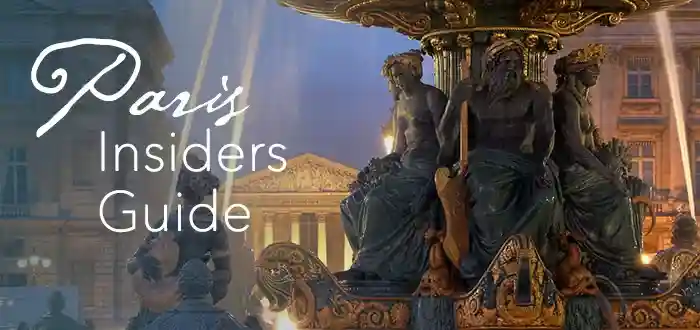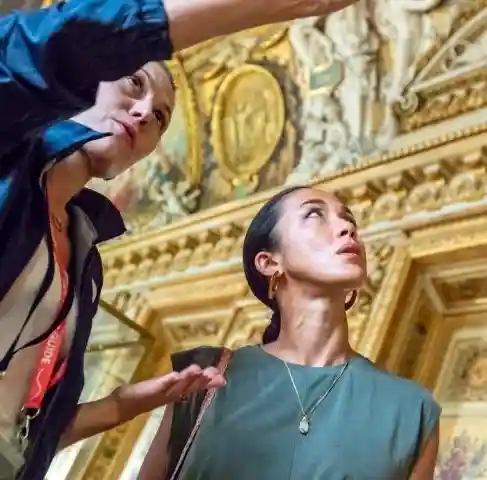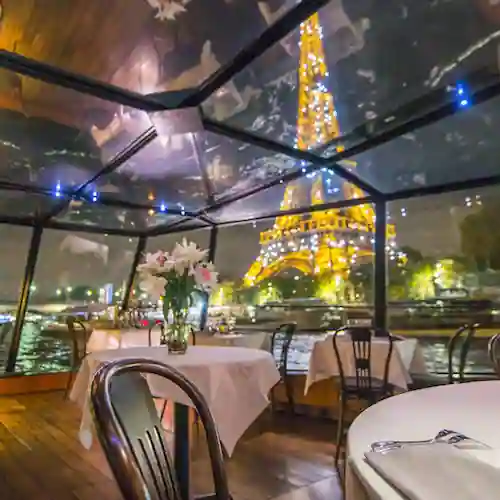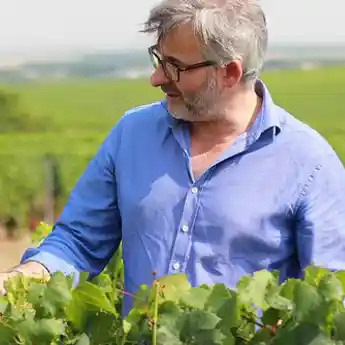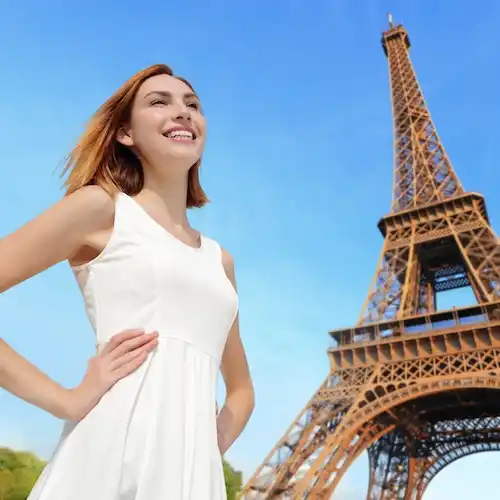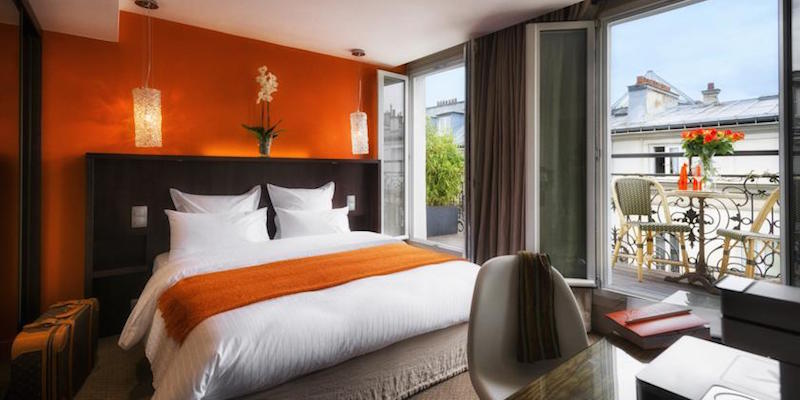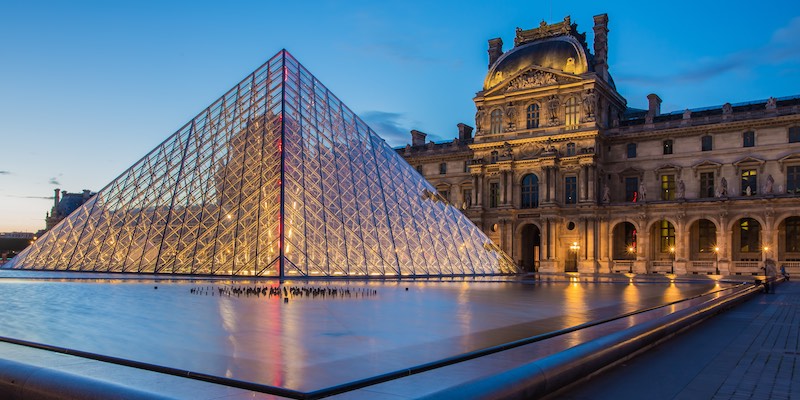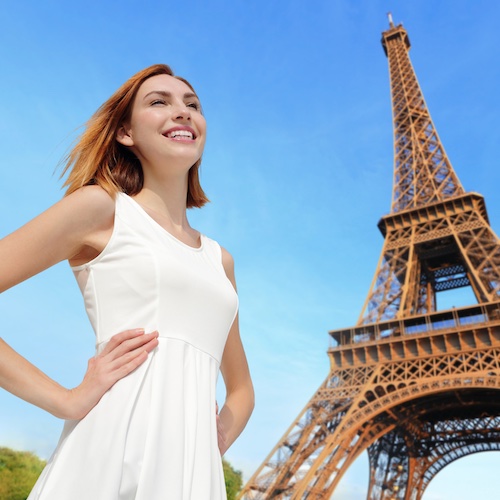The Louvre Decorative Arts Department – Refreshed & Restored
Many households have one — a special cabinet where precious items like family heirlooms, fine china and silver cutlery are kept. The Louvre, though, has an entire department of such decorative arts and it's home to a wide-ranging collection that includes the French crown jewels, silverware, bronzes, ceramics, stained glass, tapestries and furniture from the Middle Ages to the early 19th century.
![]()
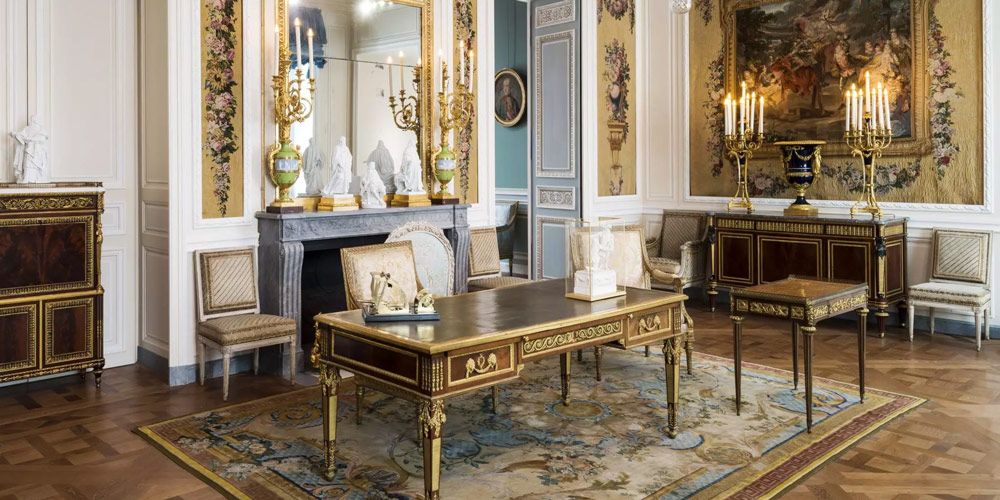 Royal Furniture 1775-1790, Decorative Arts, Louvre
Royal Furniture 1775-1790, Decorative Arts, Louvre
![]()
Now, thanks to a recent dazzling renovation, there are even more reasons to visit the Louvre's Decorative Arts department. The $33 million renovation has injected new life and added 23,000 square feet of display space to the formerly dusty department. It's now an extravaganza of dazzling art that takes you through history — from the rise to power of the Sun King to the French Revolution.
Louvre Decorative Arts – Renovation & Highlights
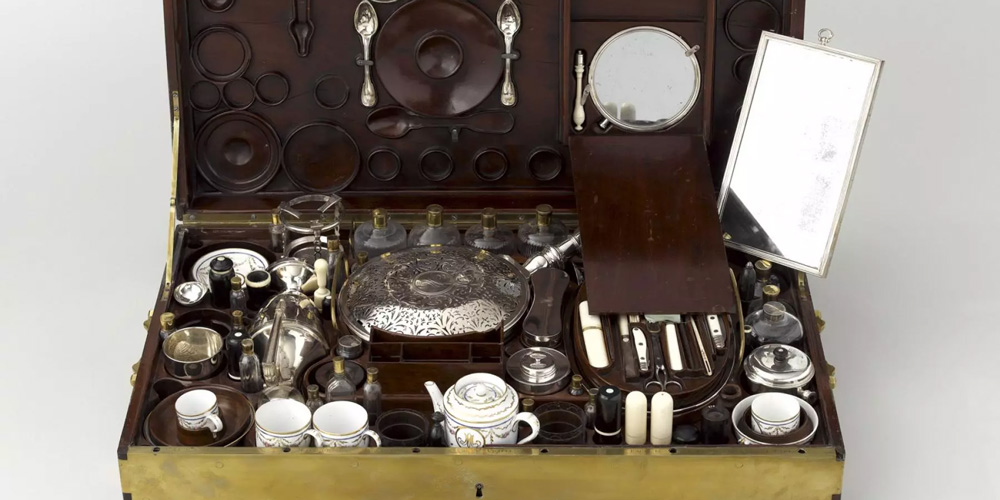 Travel kit once owned by Marie Antoinette, 1790, Decorative Arts, Louvre
Travel kit once owned by Marie Antoinette, 1790, Decorative Arts, Louvre
The renovation took a decade to complete and was the first major change to happen in the department since 1966. Thirty-five of the galleries in the Cour Carrée's north wing were restored as well as some new, recreated interiors. A highlight is the entire restored drawing room of Hôtel Dangé-Villemaré. The mansion was originally located on the Place Vendôme and was purchased by François-Balthazar Dangé in 1750. The drawing room with intricate paneling and gilded mirrors has been restored by trained artisans under the watchful eye of French interior designer Jacques Garcia.
Careful attention has been paid to the arrangement of the furniture and objets in the museum to give a sense of context within the presentation. Much of the furniture comes from royal residences — Versailles, Tuileries, St-Cloud, and Fontainebleau. The new galleries also place a special emphasis on the artisans who created the original works of art, like legendary André Charles Boulle, cabinetmaker to the king.
![]()
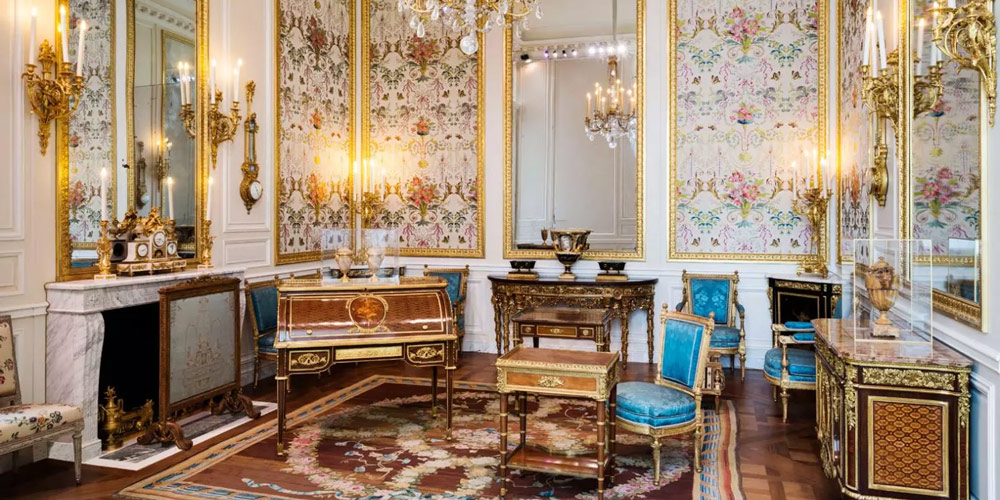 Furniture owned by Marie Antoinette, 1775-1790, Decorative Arts, Louvre
Furniture owned by Marie Antoinette, 1775-1790, Decorative Arts, Louvre
![]()
Another must-see are the French Crown Jewels. Once the symbol of France's ultimate power, the monarchy's coronation crowns were custom made for each king; each decorated with an array of precious jewels. The Couronne de Louis XV — the crown of Louis XV — features pearls, emeralds, sapphires, rubies, and diamonds. The Duchesse of Angouleme's Tiara, a dazzling crown, is decorated with diamonds and emeralds. And the Couronne de l'Impératrice Eugénie outshines them all with 2,000 diamonds and 50 emeralds.
![]()
|
Browse our hand-picked Paris hotel deals with real-time discounts of up to 20%. Stay in the Marais, Saint Germain, the Latin Quarter, the Left Bank near the Eiffel Tower… every arrondissement is on the list. |
|
Browse our hand-picked Paris hotel deals with real-time discounts of up to 20%. Stay in the Marais, Saint Germain, the Latin Quarter, the Left Bank near the Eiffel Tower… every arrondissement is on the list. |
Louvre Decorative Arts History
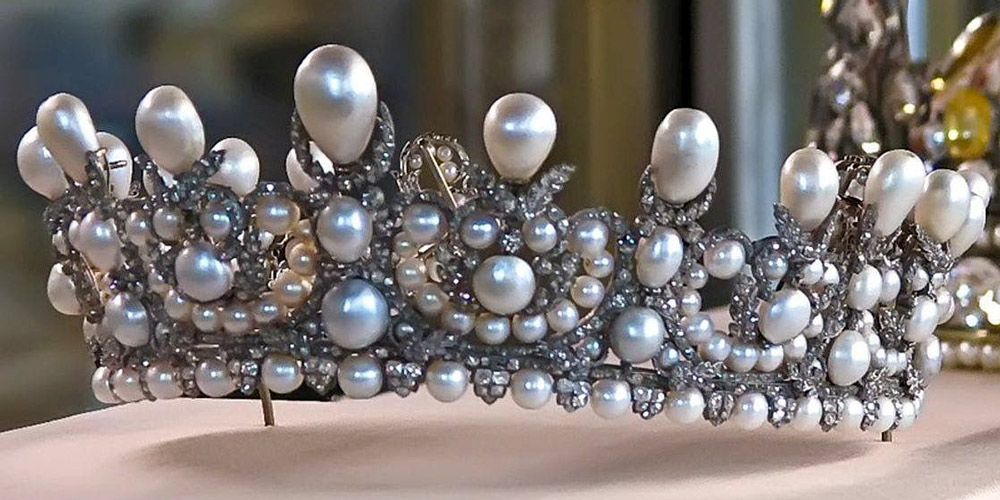 Couronne de l'Impératrice Eugénie, c. 1865, Decorative Arts, Louvre
Couronne de l'Impératrice Eugénie, c. 1865, Decorative Arts, Louvre
When the Louvre Museum was founded by decree on July 27, 1793, it was agreed that exhibits would include decorative art objets from the royal collection. The bronze statuettes and the royal gem collection came to the department in 1796, with treasures from Sainte Chapelle and the abbey of Saint-Denis, including coronation regalia of the kings of France. The initial collection was enriched during the French Revolution from confiscated artworks from aristocrats and pivotal purchases like the shield and helmet of Charles IX.
But it wasn't all about growth. In 1798, sixteen objects from Saint-Denis were sold and many items were taken by Napoleon I to decorate his imperial palaces. By 1815, Napoleon was defeated and many of the spoils of his conquests were returned to their rightful owners, including pieces back to the Louvre.
![]()
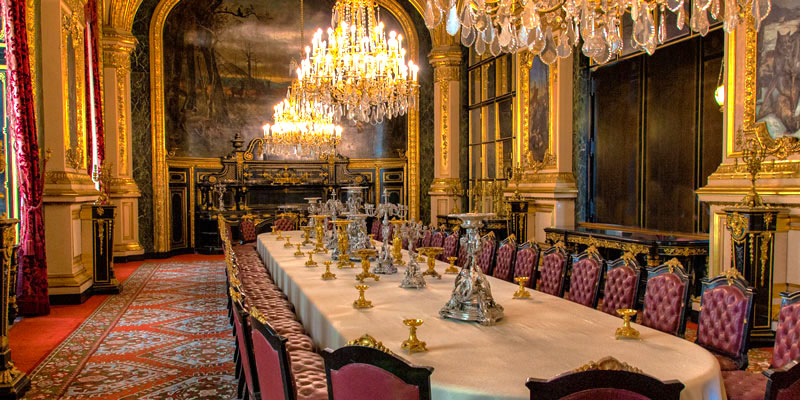 Dining room of Napoleon III, Decorative Arts, Louvre
Dining room of Napoleon III, Decorative Arts, Louvre
![]()
During the Restoration period (1815 to 1830), an active acquisitions policy was in place with important purchases of medieval and Renaissance works. From 1870 on the collection gradually expanded to include 17th and 18th century works from the Mobilier National (state collection), including furniture and objets salvaged from the destroyed palaces at the Tuileries and at Saint-Cloud. It wasn't until 1893 that decorative arts officially became the Louvre's seventh department.
Throughout the 19th and 20th centuries, the department grew by donations from the Friends of the Louvre and wealthy collectors. In 1908, Isaac de Camondo donated his 18th-century collection and, in 1922, the baroness Salomon de Rothschild donated her Renaissance artworks and 18th-century jewelry and porcelain collection.
In 1999, the collection moved to new premises in the Richelieu Wing of the Louvre. New galleries were devoted to the Middle Ages and Renaissance and a gallery of 19th-century artworks, adjoining Napoleon III's apartments (photo above) opened to the public. And now, the 2014 renovation has breathed new life into the department again.
It's a Big Department
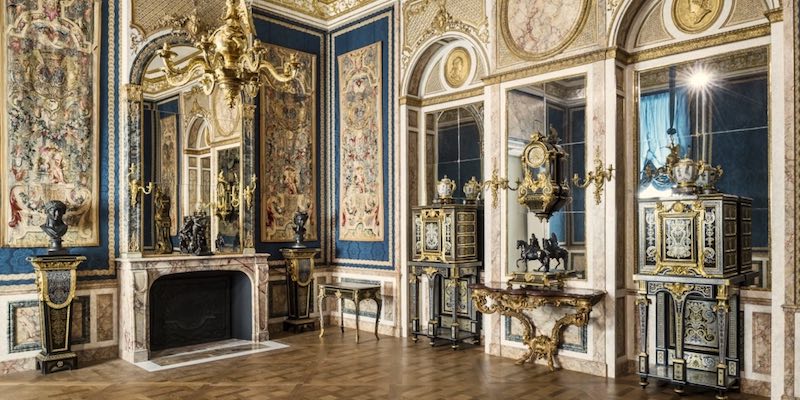 Room restored to royal splendor, with objets, Decorative Arts, Louvre
Room restored to royal splendor, with objets, Decorative Arts, Louvre
The curatorial team at Louvre Decorative Arts must have big office parties. There are two curators for the 1,000 works from the Middle Ages, three curators for the 8,000 works in the Renaissance and early 17th century, two curators for the 4,000 works in the 18th century collection, and one curator for the 19th century's 1,500 treasures. There's also a team of five scientists, half a dozen information specialists, and a librarian who work to study, manage and preserve the collections. And when they bring their husbands, wives and partners, it's a big night at the museum.
![]()
|
Skip the long lines and dive into the Louvre’s greatest hits — the Mona Lisa, Venus de Milo, and more — on a guided tour that shows you the treasures without the museum overload. |
|
Skip the long lines and dive into the Louvre’s greatest hits — the Mona Lisa, Venus de Milo, and more — on a guided tour that shows you the treasures without the museum overload. |
Louvre Decorative Arts Resources
- Location – Level 1, Richelieu & Sully Wings.
- Skip-the-Lines Guided Tour of the Louvre…
Links to the 8 Departments of the Louvre
| • Egyptian Antiquities… | • Greek & Roman Art… |
| • Near Eastern Antiquities… | • Islamic Art… |
| • Paintings… | • Sculptures… |
| • Decorative Arts… | • Prints & Drawings… |
Paris Planning Guides
 Latin Quarter Guide
Latin Quarter Guide |
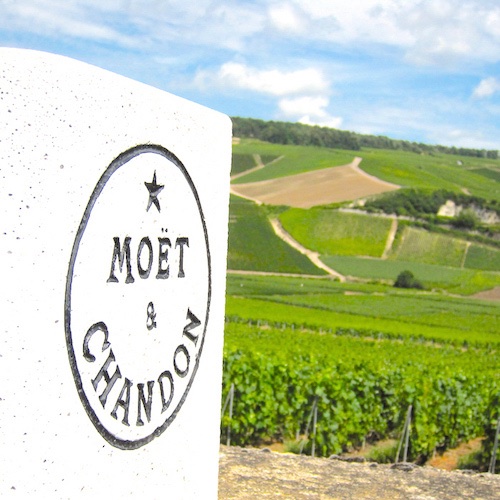 VIP to Champagne
VIP to Champagne |
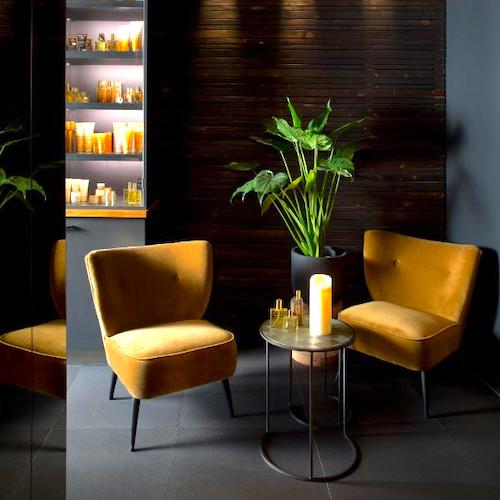 Top Montmartre Hotels
Top Montmartre Hotels |
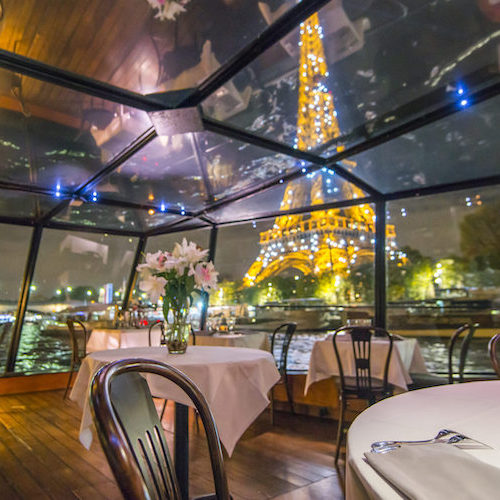 Glorious Dinner Cruises
Glorious Dinner Cruises |
Discover What's On When You're Here• January 2026 Things to Do…• February 2026 Things to Do…• Valentine's Day in Paris…• Month-by-Month Calendar… |

